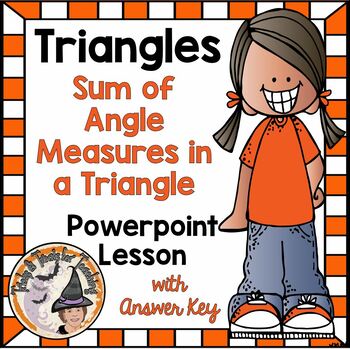Triangles Sum of Angle Measures in a Triangle POWERPOINT Lesson
- Zip
Description
Triangles-Sum-of-Angle-Measures-in-a-Triangle POWERPOINT-Lesson teaches EVERYTHING your students need to know about the sum-of-angle-measures in a triangle, and how to find the degrees of a missing angle in a Triangle. Super vocabulary, teaching examples, questioning, practice problems, word problems, drawings, and real world problems. Perfect for Distance Learning or Home Schooling! CLICK on PREVIEW to see a mini size of ALL the 21-slides in this Powerpoint Lesson! PLUS you get 2 versions of the Powerpoint and PDF's: one with answers covered and one without. You'll love using this Powerpoint lesson year after year! I also have this exact product for sale in Smartboard-Slides.
Be sure and L@@K at my other 1,285+ TERRIFIC teaching resources!
~ ~ THANK YOU KINDLY ~ ~





